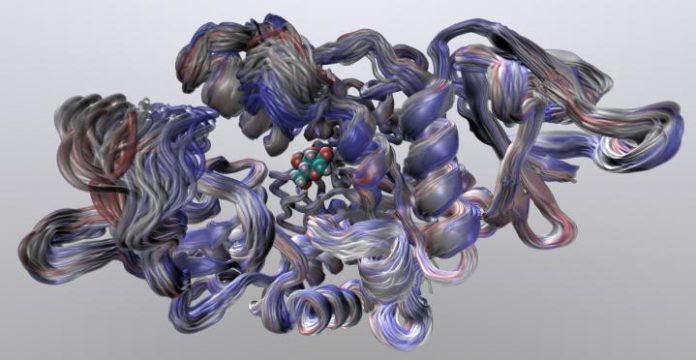For the first time, new research from the University of Bristol along with the UK and the University of Waikato, New Zealand clarifies how this ‘wiggling and jiggling’ of the molecules in catalysts – the proteins that influence organic responses to happen – is ‘arranged’ to influence them to work at a specific temperature. The study enlightens how enzymes have evolved and adapted, enabling organisms to evolve to live at different temperatures.
The study offers new bits of knowledge into how the structure of chemicals is identified with its part as an impetus and critically. It also offers a route to designing better biocatalysts for use in chemical reactions in industrial processes, such as the production of drugs.
It likewise alludes to why proteins were in the end favored by development over nucleic acids as impetuses in science: proteins offer significantly more capacity to ‘tune’ their ‘wiggling and jiggling’ and their reaction to synthetic responses.
Dr. Marc van der Kamp and Professor Adrian Mulholland (Bristol) worked with Professor Vic Arcus (Waikoto, NZ) and colleagues, to find how the ‘wiggling and jiggling’, or the dynamics of enzymes is ‘tuned down’ during the reaction they catalyze. As a result, the heat capacity of enzymes* changes during the reaction, and it is the size of this change that is the critical factor in determining the temperature at which the enzyme works best.
Dr. Van der Kamp said: “Our computer simulations of the ‘wiggling and jiggling’ of enzymes at different stages in the reaction tells us how these structural fluctuations give rise to the difference in heat capacity and thereby can predict the optimum temperature of an enzyme. Our work demonstrated that we can do this accurately for two completely different enzymes, by comparing to experimental data.
“What is fascinating to see is that the whole enzyme structure is important: the ‘dance’ does not only change close to where the chemical reaction takes place but also in parts much further away. This has consequences for evolution: the combination of the enzyme structure and the reaction the enzyme catalyzes will define its optimal working temperature. A subtle change in structure can change the ‘dance’.”
The work clarifies how living beings can advance to inhabit diverse temperatures, and insights at why proteins were in the long run favored by development over nucleic acids as impetuses in science: proteins offer substantially more capacity to ‘tune’ their ‘jiggling and wiggling’ and their reaction to compound responses.
Reference:
‘Dynamical origins of heat capacity changes in enzyme-catalyzed reactions‘ by Marc W van der Kamp, Erica J. Prentice, Kirsty L. Kraakmann, Michael Connolly, Adrian J. Mulholland and Vickery L. Arcus in Nature Communications
